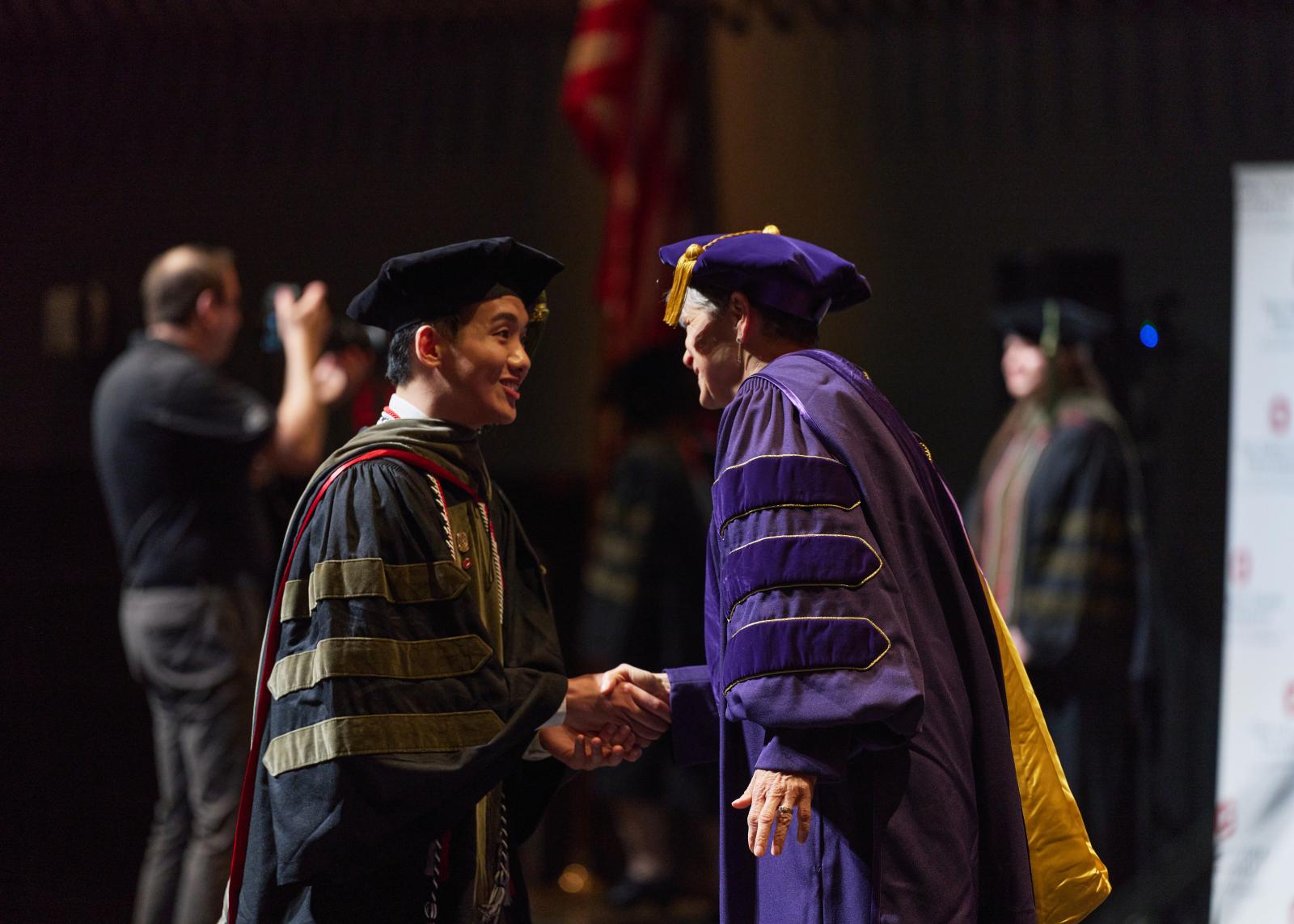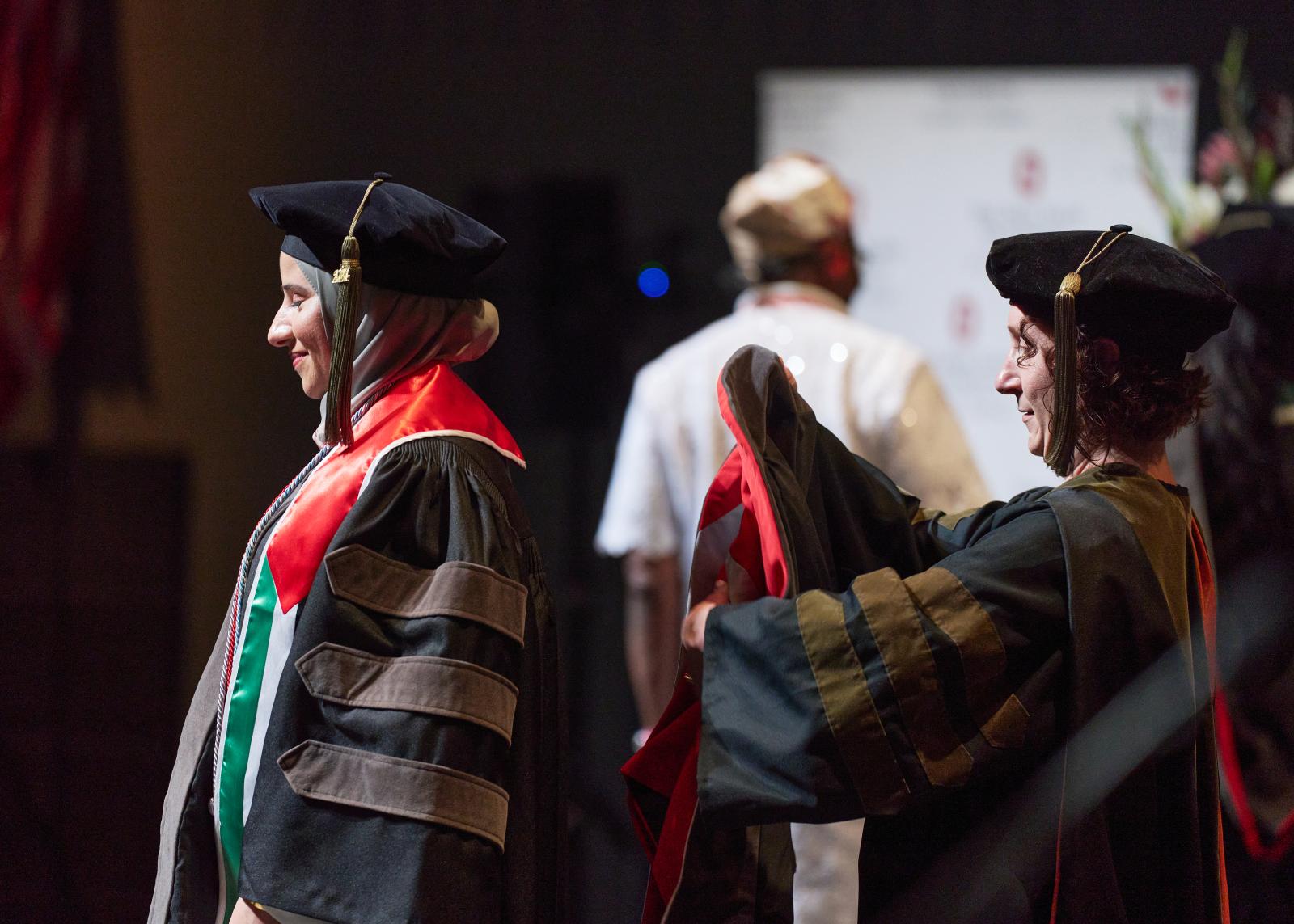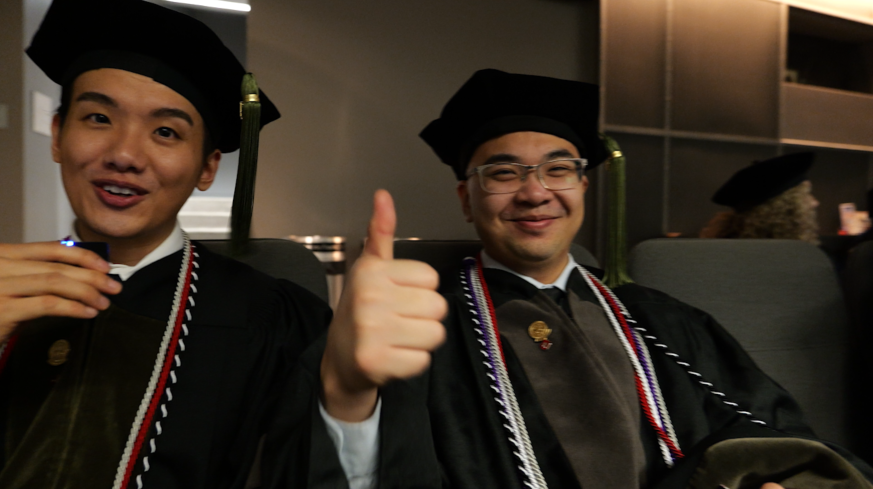PharmDs, meet your Match: What goes into the residency application process

Doctor of Pharmacy (PharmD) candidates seeking to advance their training after graduation can look no further than pharmacy residency programs.
This postgraduate option offers an environment for new pharmacists to work as licensed practitioners under the guidance of experienced preceptors. It’s a stepping stone that allows them to complete advanced training in their chosen specialization.
The pathway is growing in both popularity and necessity. The American Society of Health-System Pharmacists (ASHP) reported that over 46% of fourth-year pharmacy students applied for the 2024 residency Match, and each year, more roles require residency experience from applicants.
- 81% 2024 National Match Rate
- 93% 2024 Ohio State Match Rate
But what does the journey to residency look like, and how do thousands of PharmD students make their way through the Match process each year?
We sat down with two 2024 PharmD graduates to discuss how they found their way to the residency Match, and their tips for success.
Getting started
Though most pharmacy students pursuing residency won’t apply until the fall of their P4 year, there’s plenty to do before then to make the process smoother.
ASHP reported that in Phase I of the 2024 Match Process, applicants matched into 2,200 unique pharmacy residency programs. The abundance of programs to choose from allows applicants to search for those that balance their priorities.
Vinny Gao, PharmD ’24, identified his top three factors when applying.
“As I researched programs, I kept a chart of which programs fit my interests and needs,” Dr. Gao said. “For me, it came down to the specialty, location and salary because I needed to keep my living expenses in mind.”
Before entering their P4 year, students can access the ASHP Residency Directory, a database offering the basic information of all programs participating in each year’s Match. Since the programs are subject to change by year, the portal is a great resource for those planning to apply to stay up-to-date on their options.
The College of Pharmacy offers a dedicated Carmen page where PharmD students can engage with resources, tips and guidance on residency preparation provided by faculty and staff. Students may also choose to complete specific residency preparation associated with the page for elective credit.
Being proactive by researching residency programs not only allows candidates to make a more informed decision of whether they'd like to apply and where, but also lets them know what additional requirements are in place for certain programs.
“Be sure to not only research the programs on the ASHP Residency Portal but on their individual sites as well,” Dr. Gao advised. “Additional information exists on those sites about essential pieces like supplemental application needs or more background on program requirements.”
For example, certain programs require additional letters of recommendation or experience.
“Even if you’re unsure of whether or not you’d like to apply for residency, do your research and check out different possibilities as a P2 and P3,” Dr. Gao added. “Just keep an open mind and talk to current residents and your upperclassmen. You never know what you might uncover.”

1 - Register
The Match Process is orchestrated by ASHP in association with National Matching Services. The group works to consolidate the Match as much as possible, given the thousands of programs and applicants that participate each year.
Applicants can register for the cycle in the fall of their P4 year, however, applicants are welcome to apply in the years following their PharmD graduation. Registration for the Match typically opens at the beginning of November.
Though registration doesn’t open until November, it’s a good idea to start requesting letters of recommendation for your application and putting together a letter of intent and curriculum vitae (CV). Getting a head start can expedite the process and give references time to write letters of recommendation.
This is also a good time to double-check the application requirements for each program you’re planning to apply to. Some will require different numbers of recommendation letters or other supplemental materials.
When registration opens, candidates sign up through ASHP and the Pharmacy Online Residency Centralized Application Service (PhORCAS), the common application for residency.
Applicants must be registered with PhORCAS before they can submit program applications, so it’s a good idea to get into the system as soon as you’re ready.
Dr. Gao was able to register and apply within the first month of the platform opening since he had done his research, gathered the standard three letters of recommendation, updated his CV and created a personal statement earlier in the fall semester.
2- Apply and interview
It’s recommended that applicants submit their materials to each of their programs by the end of December during their P4 year.
Deema Alhaj, PharmD ’24, knew that staying in Columbus was a priority for her, but with seven pharmacy schools and colleges in Ohio, she also knew that the competition for these programs would be stiff.
“Throughout my APPE year, I kept a spreadsheet that listed things I learned on rotation,” Dr. Alhaj said. “From difficult situations to moments I was proud of, I wrote it all down. It really comes in handy at the end of the year because you then have so much material to recall for your applications and interviews and to decide what programs fit well.”

Between November and the March release of matches for Phase I, programs will contact applicants to offer interviews, with most taking place in January and February.
Most interviews will include an introduction to the program’s team and a panel interview. Depending on the program, these interview days can last close to a full day and may include presentations. These presentations may require students to present cases, therapeutic topics or clinical controversies.
Come prepared with real-life examples of how you function as a professional and bring plenty of questions of your own. This isn’t just to show that you’re a good fit for a program, but a space for the program to show that they’re a good fit for you.
“Honestly, I was the most stressed about the application stage,” Dr. Gao said. “Once I was able to secure interviews, I felt a lot of relief because I know that I can connect with people and really enjoy it.”
Staying honest and engaged during interviews is key to a good experience.
“These interviewers are excited to have new professionals on the team,” Dr. Alhaj said. “They want to get to know you. Just tell the interviewers what you’re looking for. The answers that are made to sound nice have probably been said a million times before and are not what they want to hear.”
3- Rank your preferences
After interviewing, it’s time for students to reflect on how they connected with each program and submit a ranked list of the programs they’re interested in through PhORCAS. This list will ultimately define how candidates match.
Drs. Gao and Alhaj both emphasized the importance of inviting loved ones to weigh in on this decision.
Dr. Gao paired up with his friend and classmate Jack Zhang, PharmD ’24. The two would call each other at the end of each interview, walking through the highlights and potential obstacles gathered from the experience.

“Having a third-party perspective was so helpful because at the end of each interview, you’re full of emotions and you need someone with an objective view,” Dr. Gao said. “I kept a running table of how our conversations went for each program so that I could make an informed decision for my rankings list.”
Both applicants and programs submit their ranked list following interviews. Once these are sent in, the Match algorithm is run to see what pairs will fit based upon available slots and preferences.
4 - Receive results
The Phase I results of the Match are released in March. Applicants are placed in the most preferred program on their list that has reciprocated interest.
Applicants who do not match during Phase I can re-enter for Phase II. Additional candidates may take part in Phase II who were not originally being considered for Phase I, so long as they meet the eligibility requirements of ASHP.
Those participating in Phase II will redo the application and interview steps for the available positions remaining. They will then submit a ranked list of their interviewed programs. The results of Phase II are released in April.
Following Phase I and Phase II of the Match, there is a Post-Match process in which ASHP works with unmatched participants and programs that still hold vacancies to create last-minute pairings.
The entire Match Process is complete by May 31.
Bouncing back
The national match rate for 2024 was 81%. PharmD graduates from Ohio State matched at a rate of 93%, according to ASHP.
That means that while thousands of PharmD students successfully match into residency programs each year, hundreds don’t. It’s not an uncommon occurrence, and it doesn’t define whether an individual will have a successful professional career.
While it’s a hard roadblock to overcome, candidates are always welcome to reapply in subsequent years and there are many ways to improve between applications.
The time between the yearly application periods offers a window where candidates can build connections and get out into the field. Reaching out to programs for feedback on an unsuccessful application or even asking for shadowing experiences at programs of interest are great starting points.
Networking with the professional community can provide valuable insights for the next round of applications and can even redirect you to a future that doesn’t include residency.
For a more in-depth look at the Post-Match process or specifics, take a look at the ASHP Match Day Resources.
If you are interested in the specifics of Early Commitment Matching, a process available to current PGY1s seeking a PGY2 position, you can learn more at the National Match Program’s site.